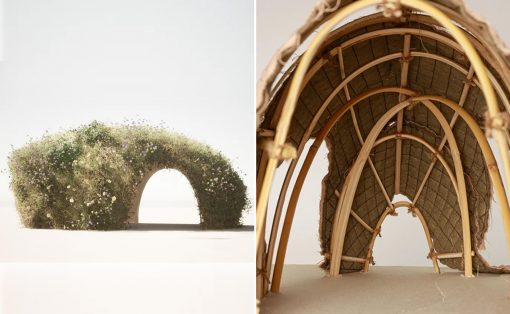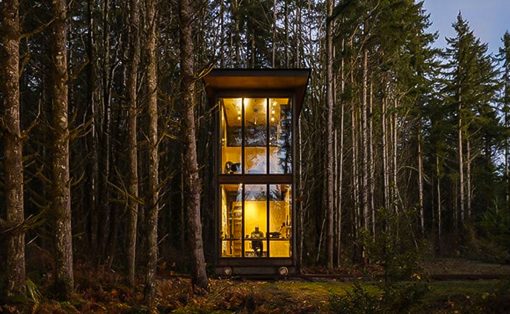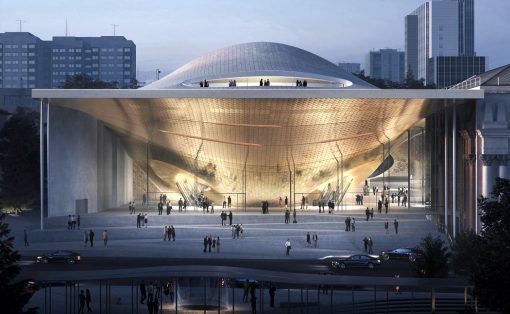It takes a lot of courage to imagine building a buoyant skyscraper that rebuilds the arctic ice caps or a structure that shifts your living-scape from the ground to the skies, literally. The future of our living quarters depends a lot upon how we treat our resources today. Going by these Twenty-seven Captivating Skyscrapers (3 award-winning and 24 honorable mentions), looks like we still need to do a lot for our mother earth. Have a look at some really creative, ingenious and dynamic vertical communities, seen through the eyes of eVolo …
Polar Umbrella by Derek Pirozzi
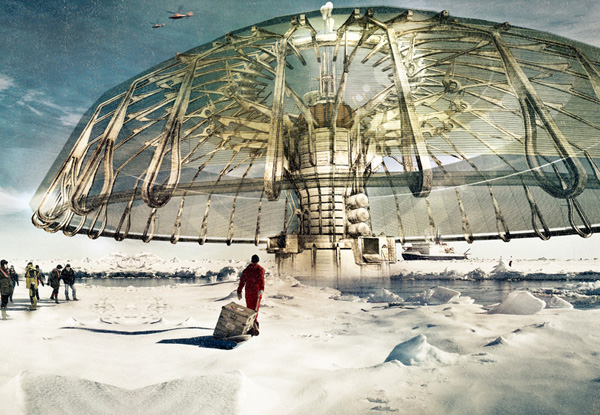
The Polar Umbrella’s buoyant super-structure becomes a statement for the prevention of future depletion of our protective arctic region. Through its desalinization and power facilities, this arctic skyscraper becomes a floating metropolis equipped with NOAA (National Oceanic and Atmospheric Administration) research laboratories, renewable power stations, dormitory-style housing units, eco-tourist attractions, and ecological habitats for wildlife. A series of these structures would be strategically located in the most affected areas.
The Phobia Skyscraper by Darius Maïkoff & Elodie Godo
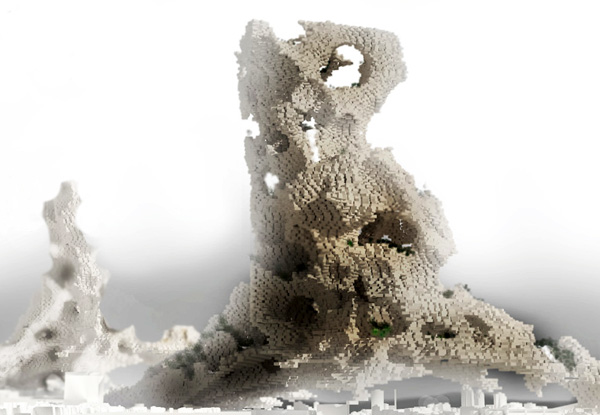
The Phobia Skyscraper is a new form of modular suburban residential development for Paris, France. It is located over the “Petite Ceinture”, a former industrial site with excellent views of the city and an extensive transportation network.
Light Park Floating Skyscraper by Ting Xu & Yiming Chen
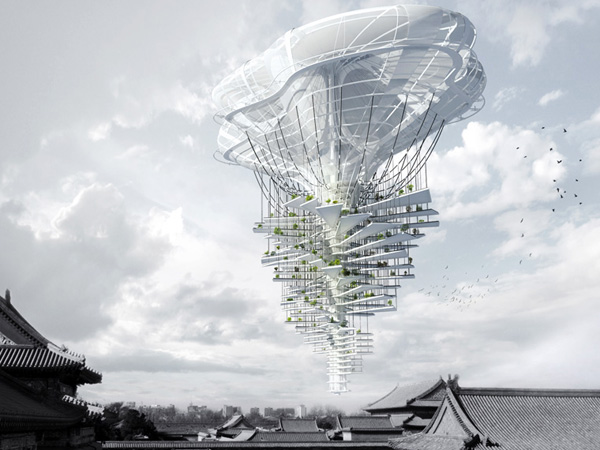
The Light Park stays afloat thanks to a large, mushroom cap-like helium-filled balloon at its top, and solar-powered propellers directly below. Programmatic platforms that host parks, sports fields, green houses, restaurants, and other uses are suspended from the top of the structure by reinforced steel cables; the platforms fan in different directions around the spherical vessel to balance its weight. These slabs are also staggered to allow for maximum exposure to sunlight on each level.
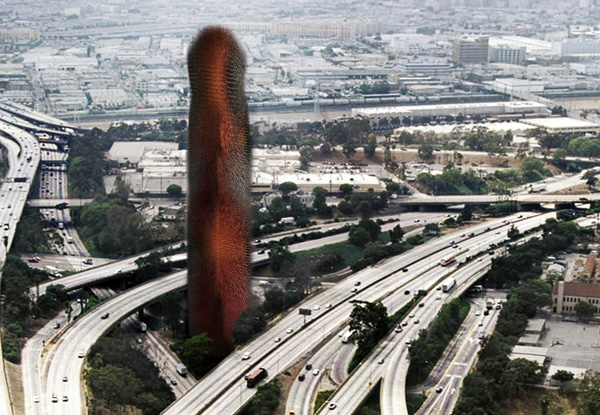
The Soundscraper takes advantage of city noise pollution by capturing airborne sound and converting it into usable energy. It is located next to main transport infrastructures, mostly outside city centers where noise pollution is at its maximum. Motorway junction, railway hub represent no man’s land in the urban territory and areas of greatest efficiency to produce energy.
The Stratosphere by Mingxuan Dong, Yuchen Xiang, Aiwen Xie, Xu Han
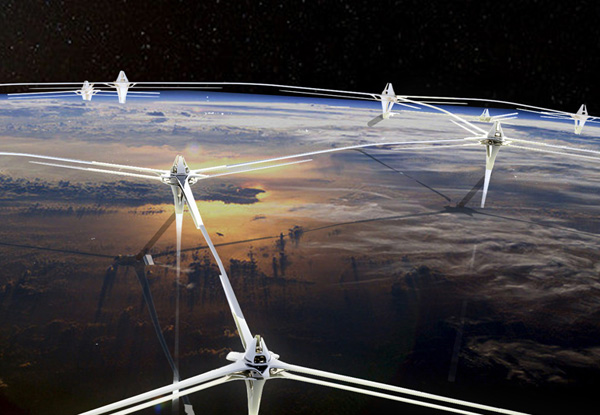
As technological innovative and higher latest skyscrapers can be, they still need to rely on the support to the ground. So a higher height usually means more unstableness as well as weaker capacity to resist disasters. The project proposes a mega hex grid that evolves around the earth circumference at a stratosphere height, the principle that support this hypothesis is that it seems to be that in a building the larger the span is, the scale and the unstableness will proportionally increase.
PH Conditioner Skyscraper by Hao Tian, Huang Haiyang & Shi Jianwei
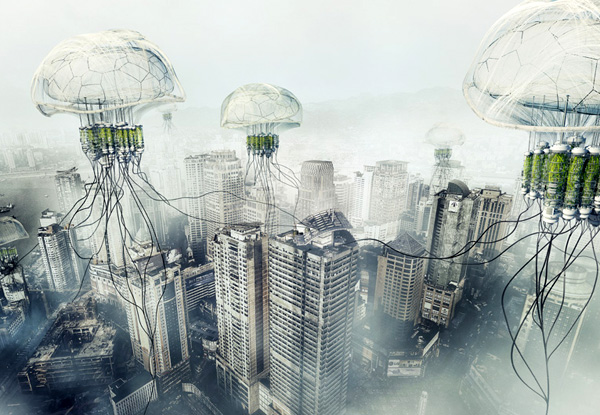
Produced by the fossil fuel used in abundance, as well as the heavy traffic and industrial production, the SO2&NOx drives the PH value of atmosphere under 5.6. Gradually precipitating to the surface of the earth, these acidic materials have caused great harm to plant, architecture and human beings. The project aim to use a gentle way to manage Acid Deposition and eventually turn pollutants into available resources (reclaimed water & chemical fertilizer) for the region of Chongqing.
The Skinscape by Woongyeun Park, Jaegeun Lim, Haejun Jung & Karam Kim
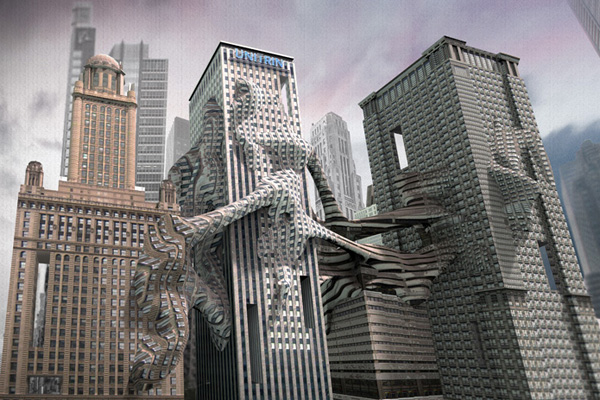
The Skinscape project was inspired from the idea that the natural environment modifies architecture as time passes by and in some instances nature even reclaims it. For example, Banyan trees now cover the Angkor Wat Temple in Cambodia built in 12th century. Experts have decided not to remove the trees because they now serve as part of the structural system – building and nature have become one.
Nomad by Antonio Ares Sainz, Joaquin Rodriguez Nuñez, Konstantino Tousidonis Rial
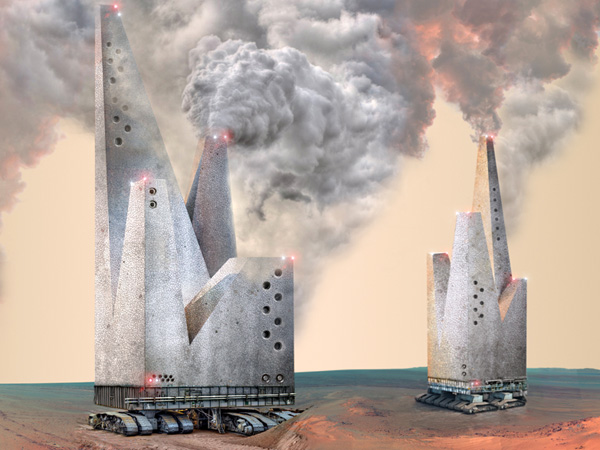
The Project Nomad’s goal is to change the atmospheric and soil chemistry of Mars to make it hospitable for human colonization.
VolcanElectric Mask by Jing Hao, Zhanou Zhang, Xingyue Chen, Jiangyue Han & Shuo Zhou
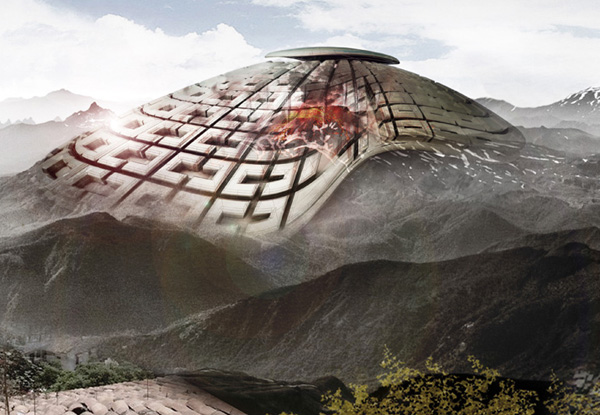
The designers of the VolcanElectric Mask propose constructing an industrial structure over a volcano that can collect tephra during an eruption, keeping it out of the skies and away from cities and villages below, and also harness the power from the volcano’s heat in calm periods to provide clean electric power to surrounding areas.
Symbiocity by Khem Aikwanich & Nigel Westbrook
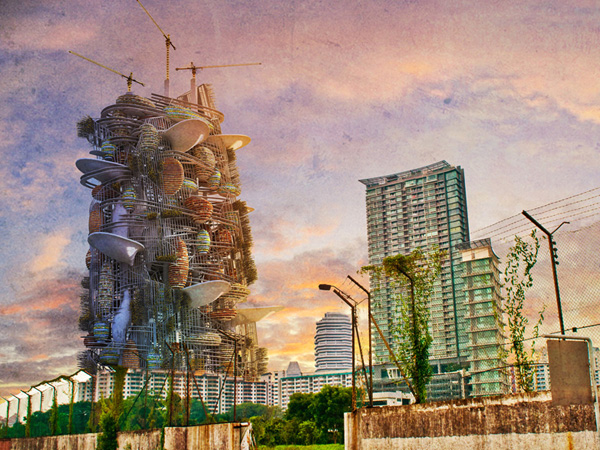
The Symbiocity project rethinks the way prisons are built and operated in an effort to better criminal justice and rehabilitation systems.
Charybdis by Nam Il Joe, Laura E. Lo & Mark T. Nicol
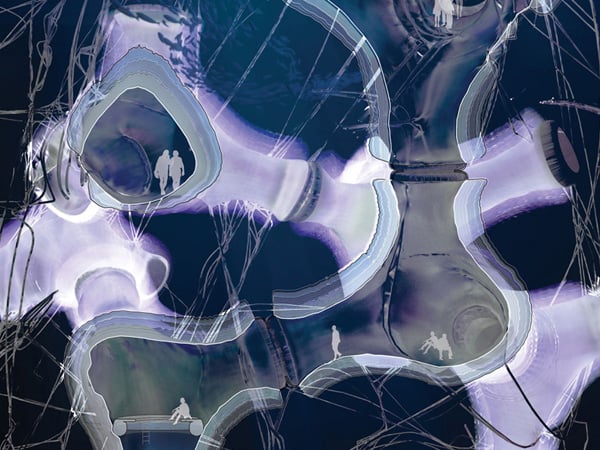
By extending the ethos of reuse to the aqueous environment, Charybdis reconsiders the plastic detritus in the world’s oceans as building material.
Kinetic Islands by Park Sung-Hee & Na Hye Yeon
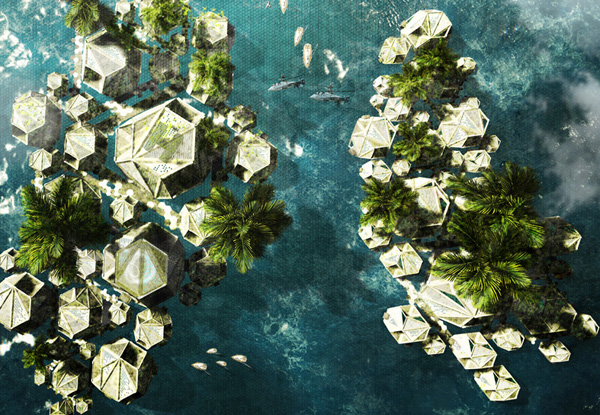
Kinetic Islands address the Great Pacific Garbage Patch problem and propose a solution for disposal huge-amount of plastic and garbage patches in North-east Pacific Ocean, and take advantage of them as construction elements for a futuristic floating city.
Urban Earth Worm Skyscraper by Lee Seungsoo
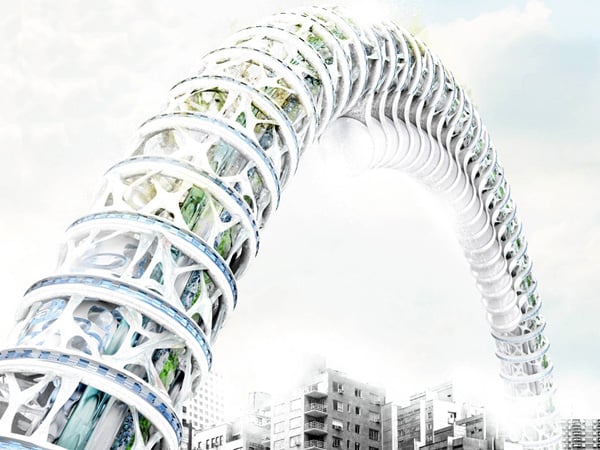
The Urban Earth Worm skyscraper uses one of the basest of creatures as its inspiration. Just as earthworms clean the soil and solve pollution problems, promulgating life in thriving ecosystems, this skyscraper will clean air and soil pollution in cities and also feed cities – literally.
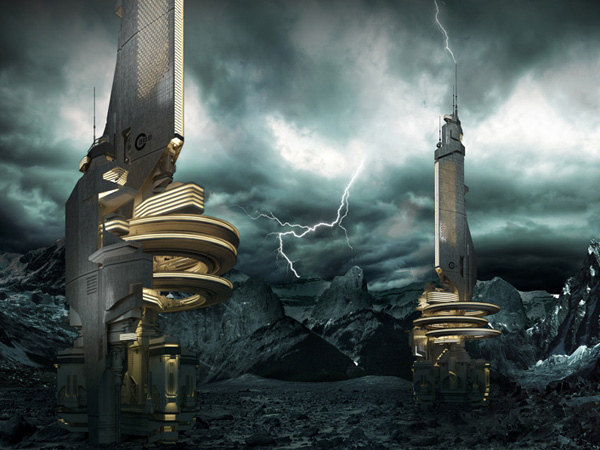
Zero is a radical skyscraper, designed to ensure mankind’s survival after global devastation. Like an emergency toolbox, it will be the starting point to the reestablish social order through digital communication and information exchange.
Scraper by Jong Hyuk Lim, Seung Jun Park, Sung Wha Na, Jae Chung ko, Ho Young Yeo & Gyoeng Hwan Kim
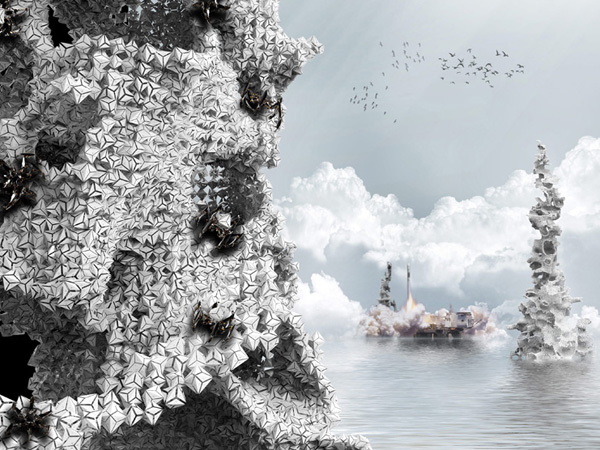
The massive amount of waste and debris accumulated in the Pacific Ocean is known as the Pacific Garbage Patch. The Scraper is a floating building designed to collect and compact the garbage into cubes with the use of automated robots.
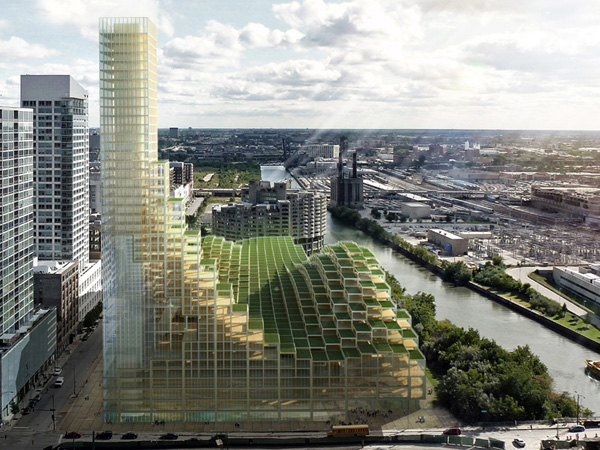
Big Wood is a prototype on mass timber construction that offers the possibility to build more responsibly while actively sequestering pollutants from our cities. Sited in Chicago; “Big Wood” aims to write a new chapter in high-rise construction.
Sea-Ty by Shinypark, Liu Tang & Lyo Heng Liu
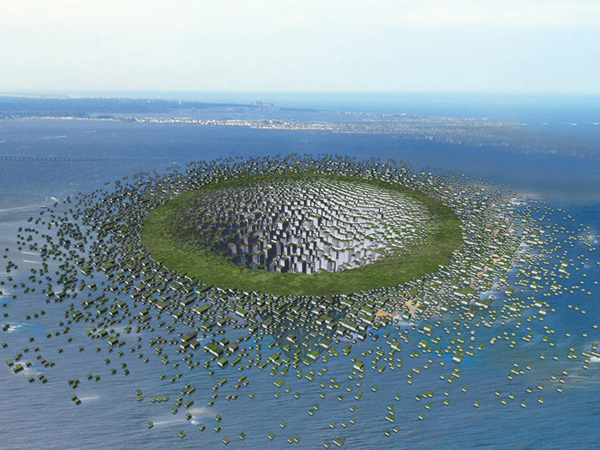
Building an underwater city is the main goal of this project that responds to the sea level rise in the upcoming decades. The US National Research Council estimates that in this century alone, the sea level will rise between 50 and 200 centimeters – leaving some existing cities underwater.
Moses by Milos Vlastic, Vuk Djordjevic, Milos Jovanovic & Darki Markovic
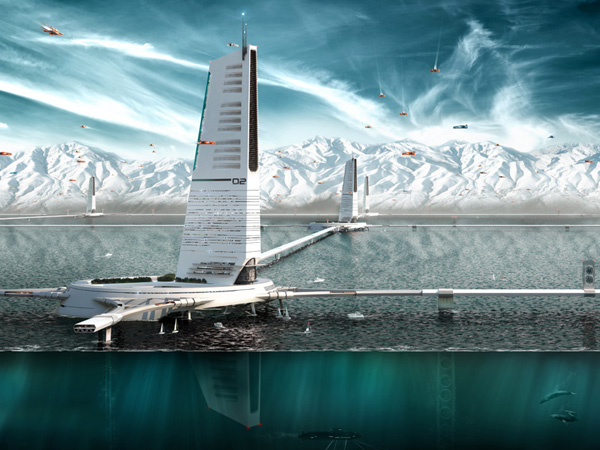
Moses is a decentralized, self-sustaining city unit, populated by approximately 25,000 inhabitants, which offers the transition of men from land to sea, so that the land could be used for food production and the Earth could start its process of self-regeneration from the negative human impact. It functions independently as a city-unit, as well as a cluster of units, which share information, energy, and goods.
Sphera by Santi Musmeci & Sebastiano Maccarrone
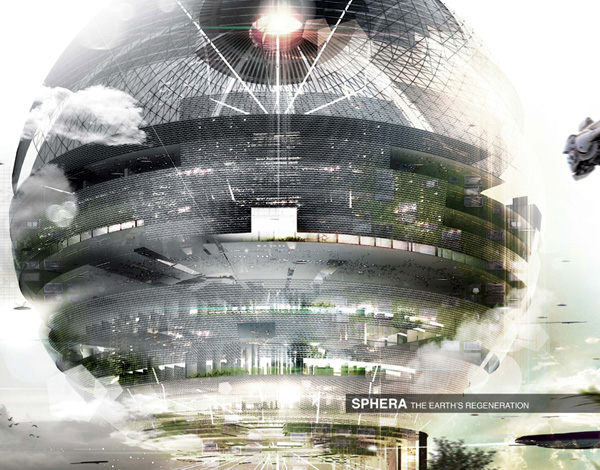
Sphera is a new type of living environment, where the citizens of the world will live during the “earth’s regeneration”, by using innovative and sustainable energies. At the same time, the purpose of Sphera is to build an entirely new civilization, where people will try to redesign their culture and generate a sustainable society by creating a global-resource based economy that enables all people to reach their highest potential, a society that protects and preserves its environment.
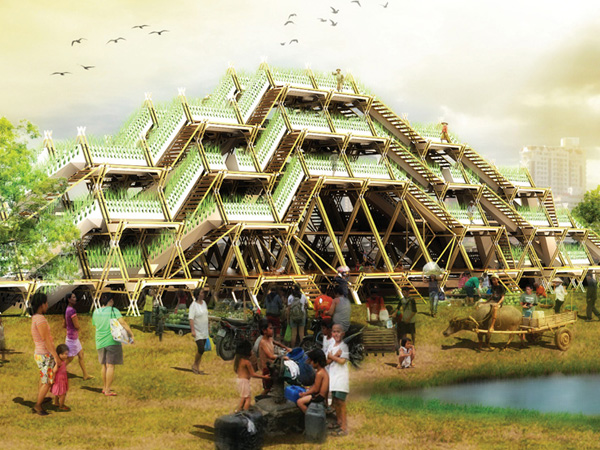
This project proposes the creation of decentralized aeroponic vertical farmlands that will be able to provide enough rice for future generations. The basic structure consists of an array of bamboo parallelograms that create stepping terraces of rice fields.
Quantum Skyscraper by Ivan Maltsev & Artem Melnik
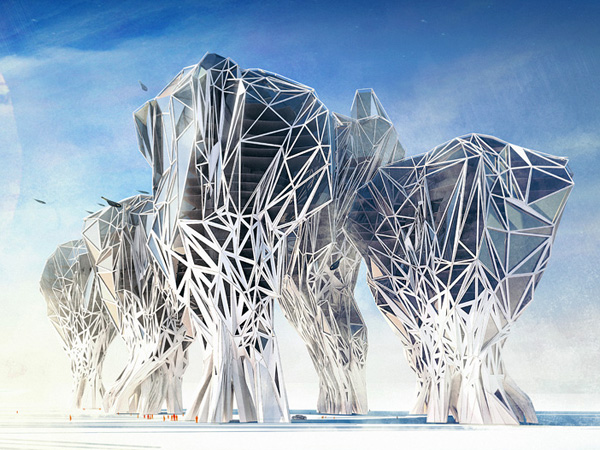
The form of a skyscraper is a growing crystal – a structure characterized by the inconstancy and regularity of its elements. The height of the units ranges from 130 to 180 m. At the full height, in the center of Multipurpose Research Complex (MNC), is a static rod – a quantum safe energy source, which will produce energy in the required quantity. The center of quantum computing, greenhouses, walking tracks and, aeration blocks are placed in immediate proximity.
Water Re-balance Tower by Zhang Zhiyang & Liu Chunyao
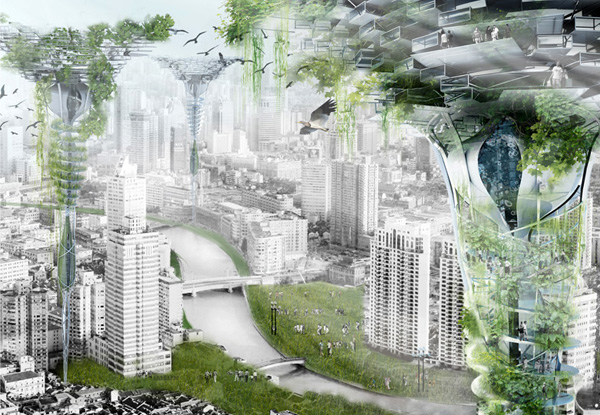
By building towers that can collect and purify rainwater and also purify the water from the river, several advantageous things occur: clean, drinkable water is readily available for the city; rising river levels are mitigated before flooding occurs; and clean water can also be pumped back under ground to fix the sinking subsidence problem the city is experiencing.
Crater Scraper by Xiaomia Xiao, Lixiang Miao, Xinmin Li & Minzhao Guo
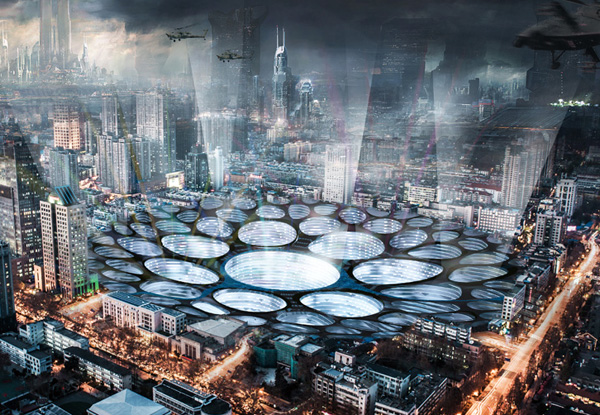
The Crater Scraper project is an imagined solution for the healing of the Earth’s surface as the planet suffers the impact of major asteroid strikes. Asteroid craters could be filled in with built settlements, holding communities of different sizes (depending on the size of the crater).
Repair Goaf by Liangpeng Chen, Yating Chen, Lida Huang, Gaoyan Wu & Lin Yuan
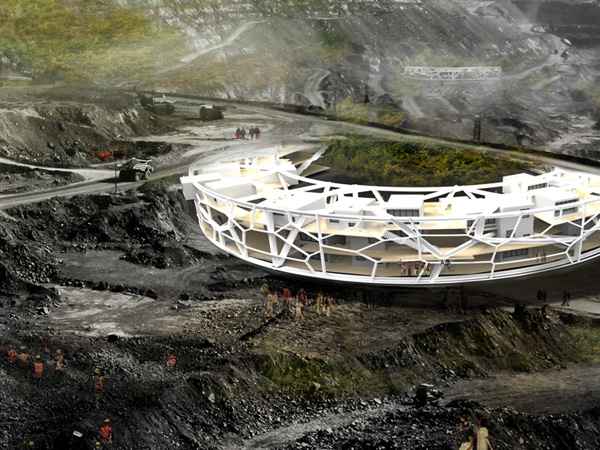
The project proposes to reuse the goaf and part of the pipelines on the working platforms. The vertical pipelines will work as the chief transportation system. The main volumes are deposited in the site.
Mist Tree by Yeonkyu Park, Kwon Han, Hyeyeon Kwon & Hojeong Lim
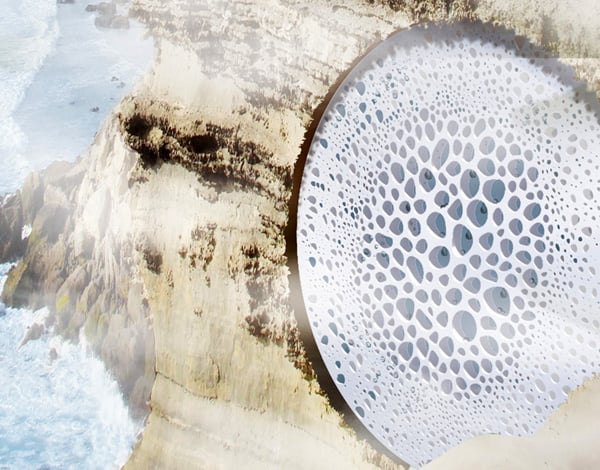
Mist-Tree is a skyscraper which can bring new life to Atacama, Chile. It proposes a simple solution to end the drought coming from the high ranges of the mountains. The skyscraper penetrates through the Andes mountain range and captures fog from the sky of the Pacific Ocean.
Promised Land by Chen Yao, Xiao Yunfeng, Li Xiaodi, Xie Rui & Yin Xiaoxiang
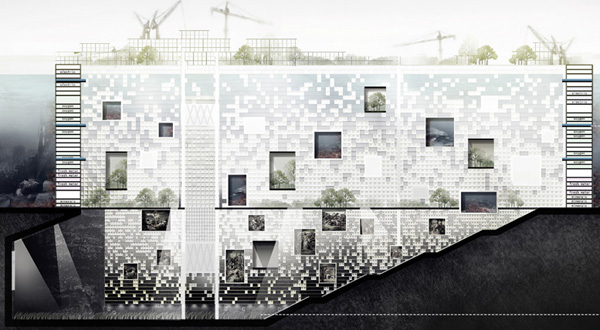
The Promised Land is conceived as “humans” final homeland, a self-sustainable city on submerged places, shape as massive cross rising over the water level. The building works as a modular self-assembly system. Prefabricated girders and columns made of reinforced concrete are fixed on the ground as foundation, and then prefabricated floors are placed in order to sustain the different programmatic modules.
Ring of Mars by Mamon Alexander & Tyutyunnik Artem
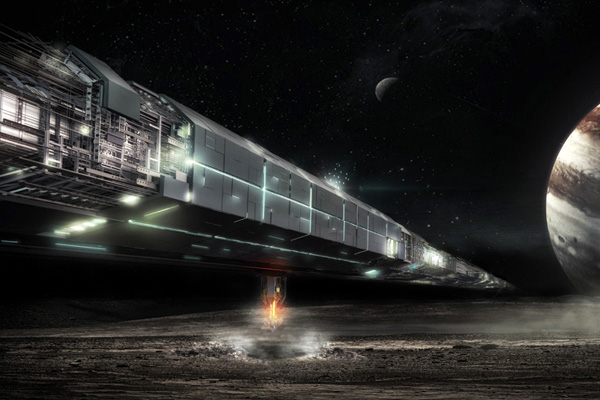
The Ring of Mars is a closed self-sufficient off-line mega-structure, which contains all functions for comfortable existence and development of all life forms.The ring is designed on the model of linear cities, a circular system for comfortable connection of all parts of the structure as single agglomerate.



